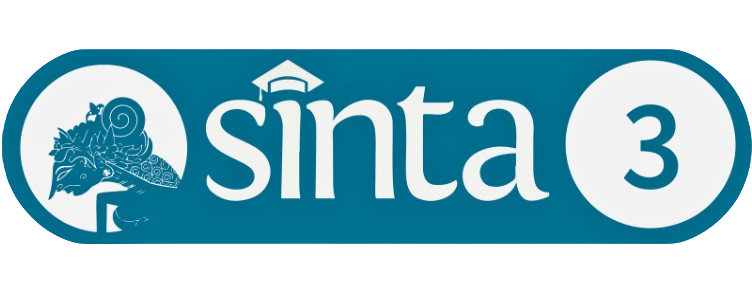Flourishing Hypertension Patients: Does Social Relations Play a Role?
Hypertension recorded as the fifth non-communicable disease (NCD) that became a major health problem in Indonesia. This study investigated the association between social relationships and flourishing among individual with hypertension. This study used a cross-sectional method involving 109 participants with hypertension at the Pasuruan City Police Pratama Clinic. The flourishing level was measured with the Flourishing Index scale and social relation is measured with the NIH Toolbox Adult Social Relationship. The results showed that there was a positive relationship between social relations and flourishing among individuals with hypertension (r = 0.437, p < 0.01), which indicates that the better the individual's social relations, the better the individual's flourishing.
Ardiansyah, M. (2012). Keperawatan Medikal Bedah. Diva Press.
Azwar, S. (2007). Metode Penelitian. Pustaka Pelajar.
Cyranowski, J. M., Zill, N., Bode, R., Butt, Z., Kelly, M. A. R., Pilkonis, P. A., Salsman, J. M., & Cella, D. (2013). Assessing social support, Companionship, And distress: National institute of health (NIH) toolbox adult social relationship scales. Health Psychology, 32(3), 293–301. https://doi.org/10.1037/a0028586
Donaldson, T. (2024). Human flourishing, the goals of medicine and integration of palliative care considerations into intensive care decision-making. Journal of Medical Ethics, 50(8), 539-543. https://doi.org/10.1136/jme-2023-109299
Edgar, A., & Pattison, S. (2016). Flourishing in Health Care. Health Care Analysis, 24(2), 161–173. https://doi.org/10.1007/s10728-016-0315-5
Engel, G. L. (1977). The need for a new medical model: A Challenge for Biomedicine. Science, 196(4286), 129-136. https://doi.org/10.1126/science.847460
Hadi, S. (2000). Metodologi Research. Fakultas Psikologi UGM.
Huppert, F. A., & So, T. T. C. (2009). What percentage of people in Europe are flourishing and what characterises them? Briefing document for the OECD/ISQOLS meeting “Measuring subjective well-being: an opportunity for NSOs?”. Well-Being Institute, University of Cambrigde.
Janicki-Deverts, D., Cohen, (2011) Social ties and resilience in chronic disease. In Southwick, S. M., Litz, B. T., Charney, D., & Friedman, M. J. (Eds), Resilience and mental health: Challenges across the lifespan (pp. 76-69). Cambridge University Press.
Kang, H. (2021). Sample size determination and power analysis using the G* Power software. Journal of educational evaluation for health professions, 18, 17. https://doi.org/10.3352/jeehp.2021.18.17
Karademas, E. C., Dimitraki, G., Papastefanakis, E., Ktistaki, G., Repa, A., Gergianaki, I., Bertsias, G., Sidiropoulos, P., Mastorodemos, V., & Simos, P. (2020). Emotion regulation contributes to the well-being of patients with autoimmune diseases through illness-related emotions: A prospective study. Journal of Health Psychology, 25(13-14), 2096-2105. https://doi.org/10.1177/1359105318787010
Kern, M. L., Waters, L., Adler, A., & White, M. (2014). Assessing employee wellbeing in schools using a multifaceted approach: Associations with physical health, life satisfaction, and professional thriving. Psychology, 5(6), 500-513. http://doi.org/10.4236/psych.2014.56060
Kemenkes. (2018). Riset Kesehatan Dasar. Badan Kebijakan Pembangunan Kesehatan
Keyes, C. L. M. (2005). Mental illness and/or mental health? Investigating axioms of the complete state model of health. Journal of Consulting and Clinical Psychology, 73(3), 539–548. https://doi.org/10.1037/0022-006X.73.3.539
Keyes, C. L. M. (2007). Promoting and Protecting Mental Health as Flourishing: A Complementary Strategy for Improving National Mental Health. American Psychologist, 62(2), 95–108. https://doi.org/10.1037/0003-066X.62.2.95
Lazarus, R. S., & Folkman, S. (1986). Cognitive theories of stress and the issue of circularity. Dalam M. H. Appley & R. Trumbull (Eds.), Dynamics of Stress (hal. 63–80). Springer US. https://doi.org/10.1007/978-1-4684-5122-1_4
Rahe, M., & Jansen, P. (2023a). A closer look at the relationships between aspects of connectedness and flourishing. Frontiers in Psychology, 14. https://doi.org/10.3389/fpsyg.2023.1137752
Sarafino, E. P., & Timothy W. Smith. (2011). Health Psychology: Biopsychosocial Interactions (7th ed.). Wiley.
Schmidt-Sane, M., Cele, L., Bosire, E. N., Tsai, A. C., & Mendenhall, E. (2023). Flourishing with chronic illness(es) and everyday stress: Experiences from Soweto, South Africa. Wellbeing, Space and Society, 4, 100144. https://doi.org/10.1016/j.wss.2023.100144
Seligman, M. E. P. (2011). Flourish. Random House Australia.
Shdaifat, E., Alshowkan, A., Omer, A., Alqahtani, F., AL‐Qahtani, M., Alsaleh, N., Kamel, N., & Alotaibi, N. (2024). Flourishing among undergraduate nursing students: Insights from a cross‐sectional study in Saudi Arabia. Nursing Open, 11(3), e2119. https://doi.org/10.1002/nop2.2119
Spruill, T. M. (2010). Chronic psychosocial stress and hypertension. Current Hypertension Reports, 12(1), 10-16. https://doi.org/10.1007/s11906-009-0084-8
Sugiyono. (2022). Metode Penelitian Kuantitatif. Alfabeta.
Trompetter, H. R., Mols, F., & Westerhof, G. J. (2019). Beyond Adaptive Mental Functioning with Pain as the Absence of Psychopathology: Prevalence and Correlates of Flourishing in Two Chronic Pain Samples. Frontiers in Psychology, 10, 2443. https://doi.org/10.3389/fpsyg.2019.02443
VanderWeele, T. J. (2017). On the promotion of human flourishing. Proceedings of the National Academy of Sciences of the United States of America, 114(31). https://doi.org/10.1073/pnas.1702996114
Vieth, A. Z., Hagglund, K. J., Clay, D. L., Frank, R. G., Thayer J.F, Johnson, J. C., & Goldstein, D. E. (1997). The contribution of hope and affectivity to diabetes-related disability. An exploratory Studi. Journal of Clinical Psychology in Medical Setting, 4, 65–77. https://doi.org/10.1023/A:1026284104493
Vidal, C., Silverman, J., Petrillo, E. K., & Lilly, F. R. W. (2022). The health promoting effects of social flourishing in young adults: A broad view on the relevance of social relationships. The Social Science Journal, 59(2), 221–235. https://doi.org/10.1016/j.soscij.2019.08.008
Walker, J., Lovett, R., Kukutai, T., Jones, C., & Henry, D. (2017). Indigenous health data and the path to healing. The Lancet, 390(10107), 2022–2023. https://doi.org/10.1016/S0140-6736(17)32755-1
Widana, W. & Muliani, P., L. (2020). Uji Prasyarat Analisis. Klik Media.
World Health Organization. (2017). Hipertensi. https://www.who.int/news-room/fact-sheets/detail/hypertension
Copyright (c) 2025 Okik Yoga Pratama, Amherstia Pasca Rina, IGAA Noviekayati, SRK Syaharani

This work is licensed under a Creative Commons Attribution 4.0 International License.
BRPKM is a periodical publication with open access to the Creative Commons Attribution 4.0 International (CC-BY 4.0). Therfore, the copyright remains with the author.
With this license, anyone has the right to use the information and to re-distribute the content contained in this journal for any purpose, including commercial purposes. It can be done as long as it fulfills two conditions, namely; (1) you shall provide attribution by citing the original link source, and state if any changes have been made; and (2) you may not use any legal provisions or technological means of control that can legally restrict others from doing the things that are permitted by this license.
Journal editors will not ask the author to approve the transfer of copyright on all published manuscripts.










